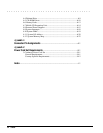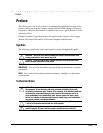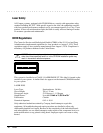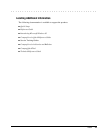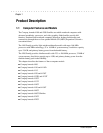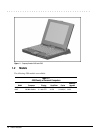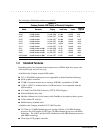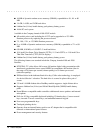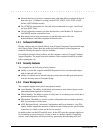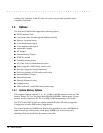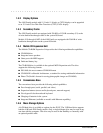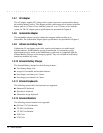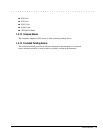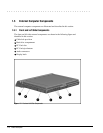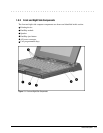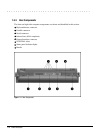
. . . . . . . . . . . . . . . . . . . . . . . . . . . . . . . . . . . . .
Product Description 1-5
■
Infrared interface for wireless communication with other IrDA-compliant devices at
data rates up to 115 kbaud or 4 mbps on the 4210T, 4220T, 4150, 4150T, 4160T,
and the 4160T Slimline models.
■
Two PCMCIA standard device slots that will accommodate two types I and II and
one type III PC Cards
■
120-pin expansion connector provides the interface to the Mobile CD Expansion
Unit (MCD) and the convenience base
■
Rear-panel ports provide connections for parallel and serial, video out,
keyboard/mouse, and IrDA compliant infrared devices
1.3.1 Software Fulfillment
Backup software may be ordered directly from Compaq Computer Corporation through
the Compaq Order Center. Both the model and serial numbers of the computer are
needed to identify the specific software available.
For technical questions about software for the computer, contact a Compaq Technical
Support Engineer. The model and serial numbers of the computer should be available
before making the call.
1.3.2 Security Features
The computer has the following security features:
■
Ability to secure the computer and MCD Expansion Unit to an immovable object
with an optional cable lock.
■
Ability to establish power-on and setup passwords and to disable ports and devices
from the Security menu in Computer Setup.
1.3.3 Power Management
The computer supports three power management modes:
■
Local Standby: The ability of individual subsystems to enter reduced power modes
after predetermined periods of inactivity.
■
Global Standby: The ability to place all subsystems in a reduced power mode after a
predetermined period of inactivity.
■
Hibernation: The ability to save the system configuration and user data to the hard
disk, for restoration at a later time.
■
ACPI Hardware Ready (Advanced Configuration and Power Interface): the 4200
Family models support the operation of hardware and software power specifications
to interface in a single system and be used as needed.
In addition, there are the OFF and ON states. In the OFF state, the computer appears to
be consuming no power; however, as long as there is a battery capable of supplying
current, some components will be powered up, performing housekeeping tasks and



